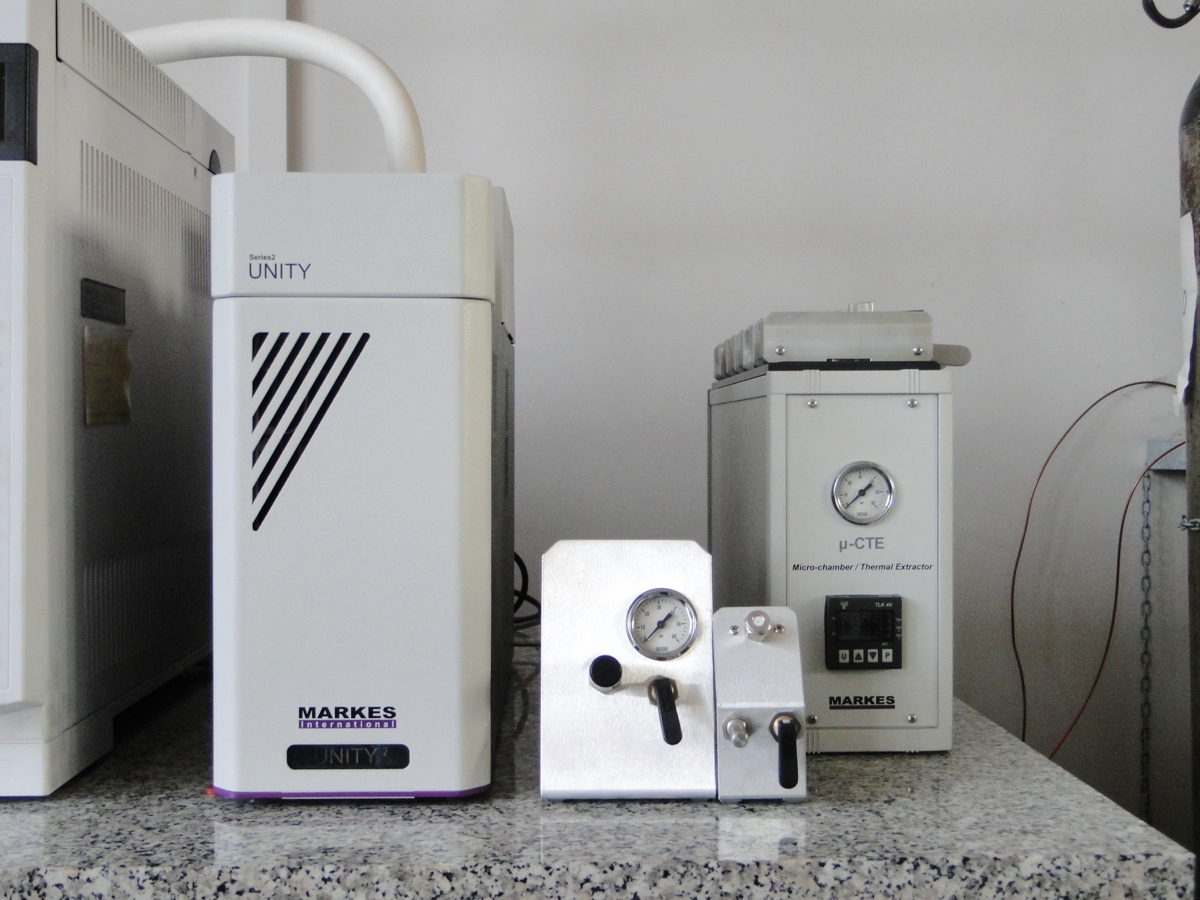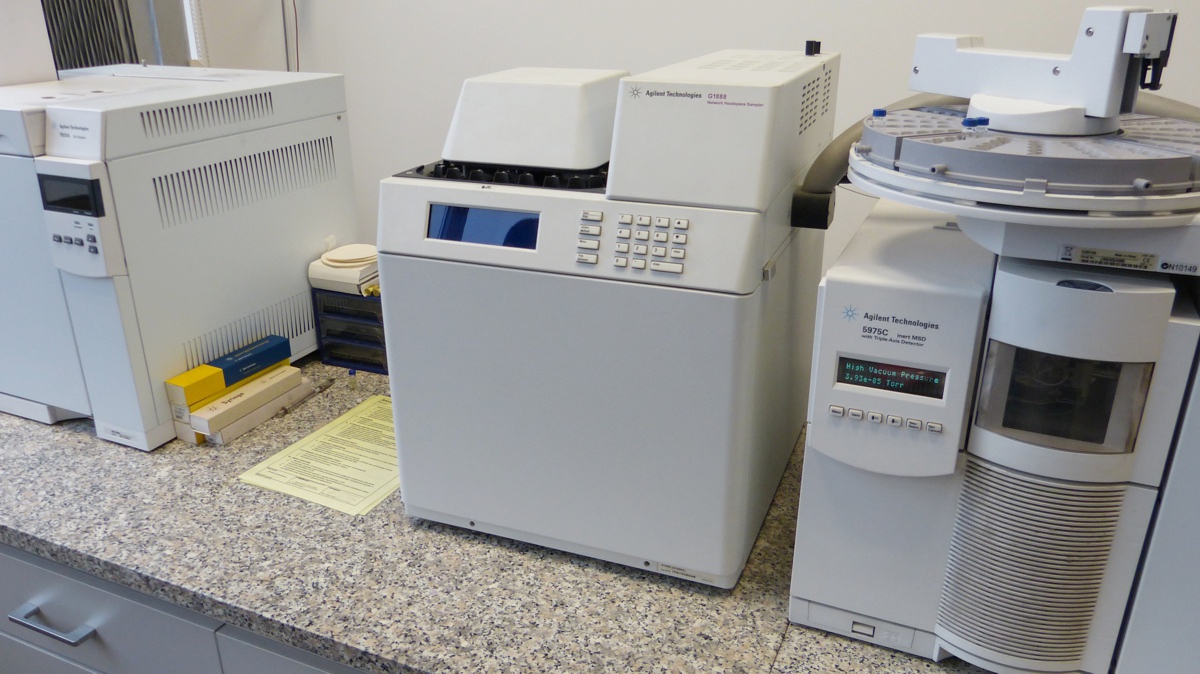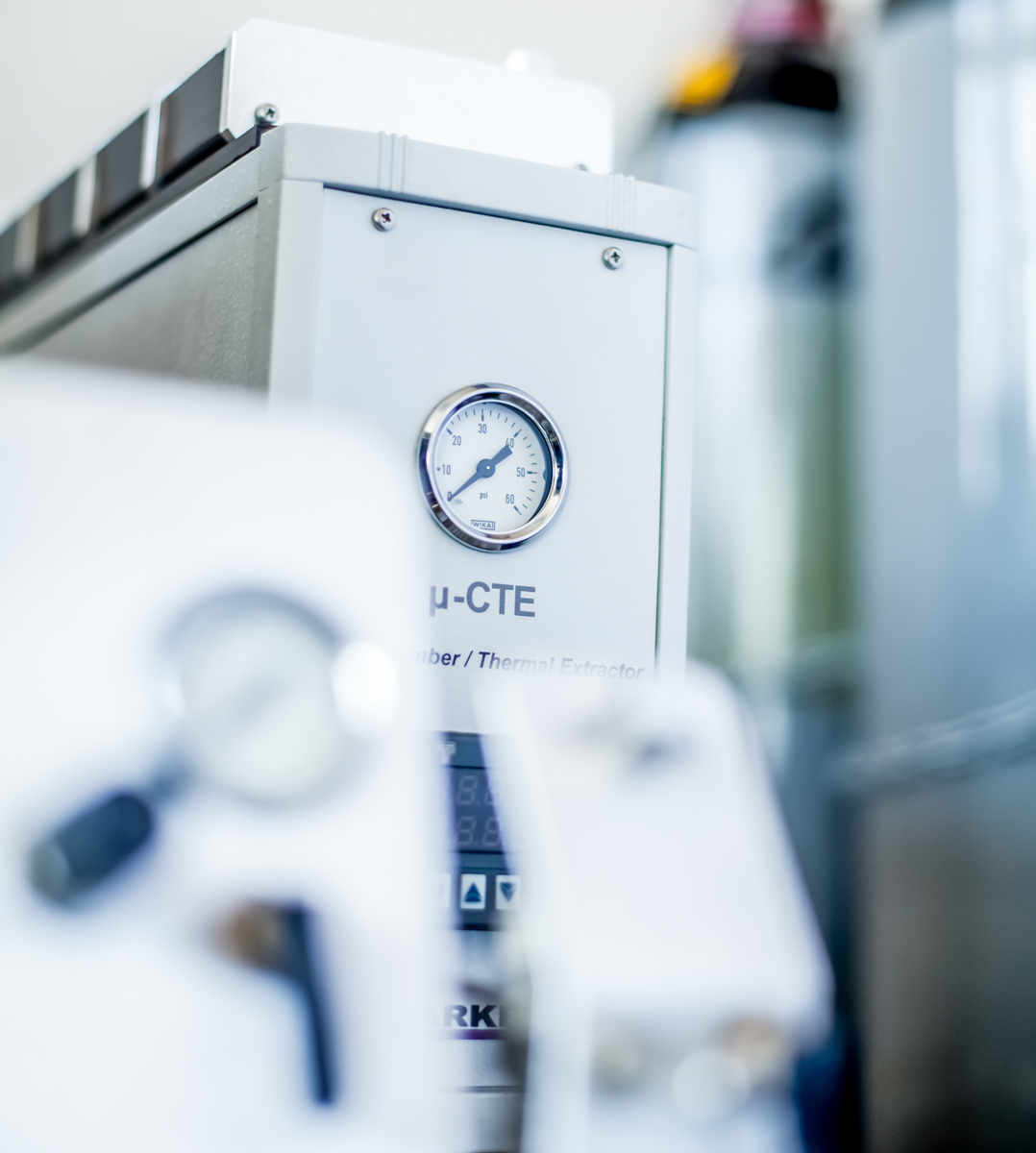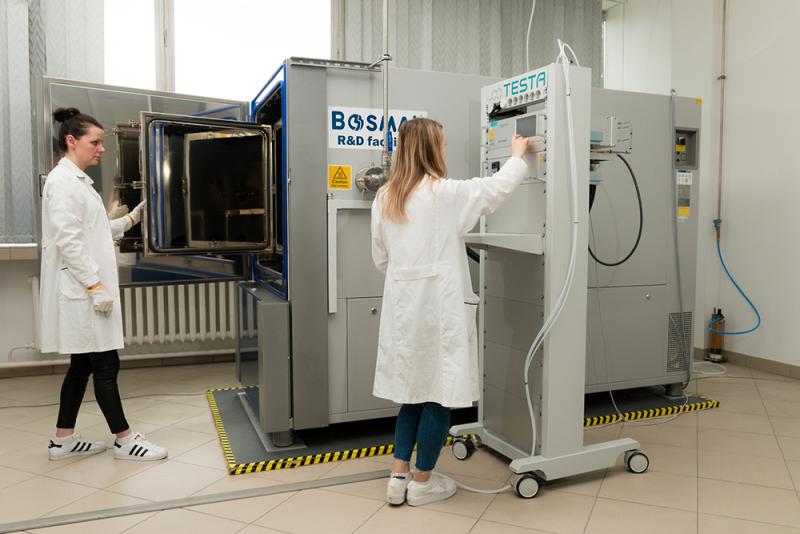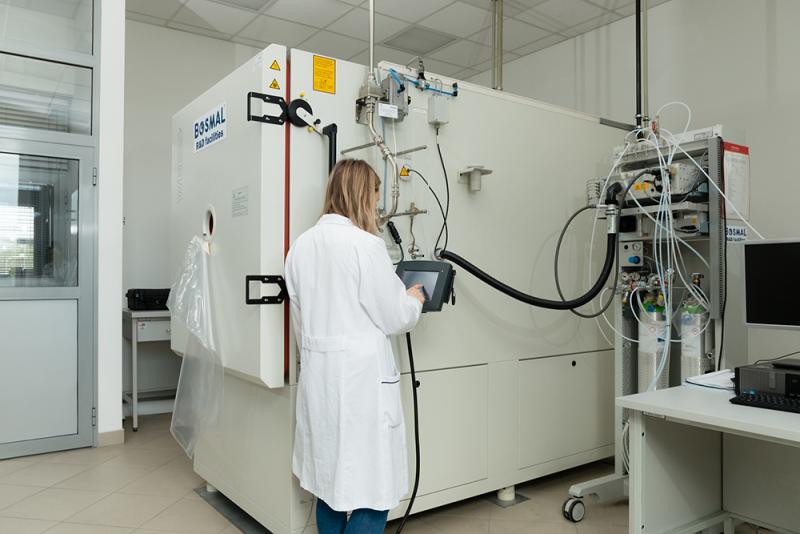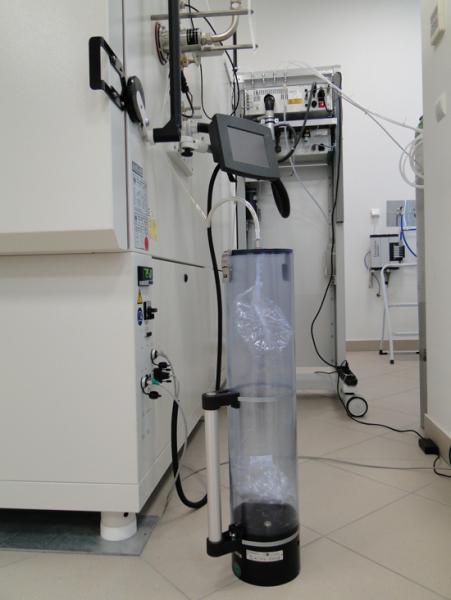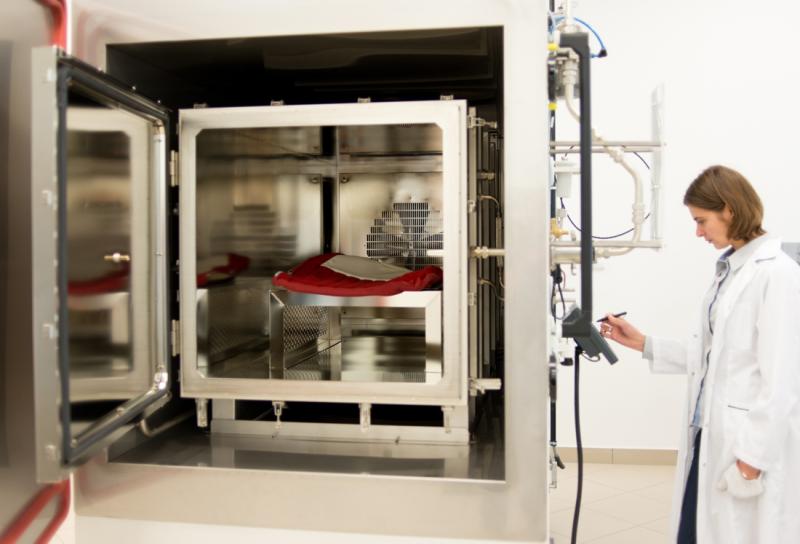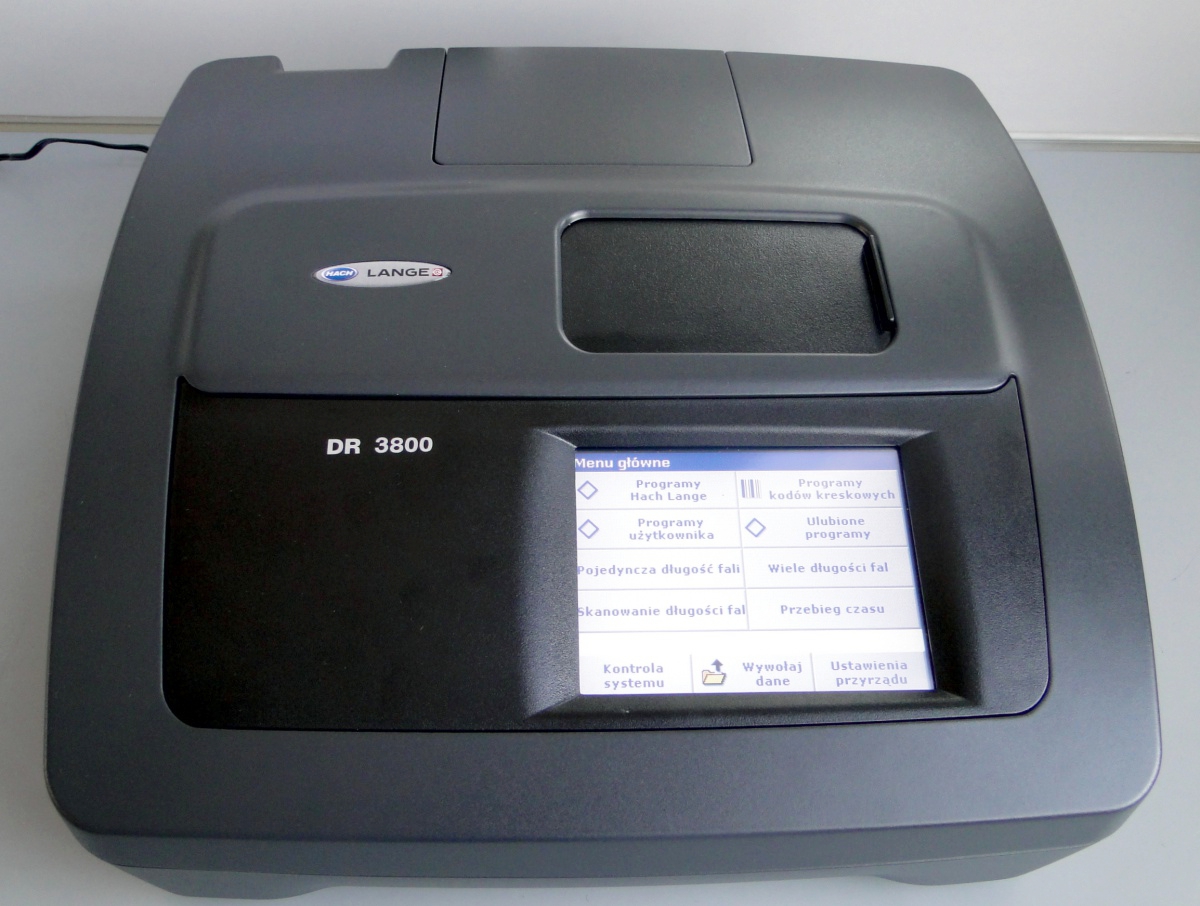BOSMAL a certified supplier of further laboratory services for the Volkswagen Group
Emission of volatile substances (emission of organic compounds - VOCs)
We conduct tests of products and materials in terms of emissions of volatile substances and emitted odours. Organic substances emitted from tested products and materials, after being absorbed on suitable solid adsorbents or directly from the probe are analysed using gas and liquid chromatography methods. We qualitatively and quantitatively identify volatile and semi-volatile organic compounds, carbonyl compounds (including aldehydes), phthalates, amines and nitrosamines.
The method includes heating the sample placed in a quartz tube using a thermodesorber; next, the emitted compounds are concentrated and separated chromatographically. The conducted test results in determination of total volatile organic compounds emission (VOC), converted to toluene (µg/g) and total emission of semi-volatile (SVOC) / heavy organic compounds (FOG), converted to hexadecane (µg/g). Moreover, the organic compounds for which emission exceeded 1 µg/g are identified.
Norms
- VDA 278,
- GMW 15634,
- and others.
Testing and Measuring apparatus
- Agilent 7890A gas chromatograph with flame-ionization detector (FID)
- Agilent 5975C Inert selective mass detector
- MARKES UNITY2 thermodesorber
The tests consists of heating up a determined quantity of plastic or rubber sample, or a finished product in a Headspace stove (normalised time and temperature). The substances emitted are analyzed using the gas chromatography method with flame-ionization detection (FID) and mass spectrometry (MS) (Photo: GC-MS/FID gas chromatograph). Total emissions of volatile organic compounds (TVOC) are converted to acetone carbon (µgC/g for the sample).
Norms
- VDA 277
- PV 3341
- VCS 1027,2749
- FLTM BZ 157-01
- GMW 8081
- and others
The concentrations of emitted specific substances are calculated on the basis of suitable calibration curves.
Testing and measuring apparatus
- Agilent 7890A gas chromatograph with flame-ionization detector (FID)
- Agilent 5975C Inert selective mass detector
- Agilent G1888 Headspace Sampler
The method consists of placing and heating up of a plastic or rubber sample or finished product in a microchamber of 44 cm3 capacity. Substances emitted are then sampled dynamically onto an appropriate deposit, depending on the type of the compound being analysed; then, qualitative and quantitative analyses are conducted using the gas (volatile organic compounds, amines, nitrosamines) and liquid (aldehydes, ketones, phthalanes) chromatography methods.
Norms
- TPJLR.52.104
- ISO 16000-6
- ISO 16000-3
- and others
Testing and measuring apparatus
- Agilent 7890A gas chromatograph with flame-ionization detector (FID)
- Agilent 5975C Inert selective mass detector
- MARKES UNITY2 thermodesorber
- Agilent 1260 Infinity high efficiency liquid chromatograph
- Agilent 7890B gas chromatograph with nitrogen-phosphorus detector (NPD)
- Markes microchamber - Micro-Chamber/Thermal Extractor (µ-CTE)
1 m3 chambers are used in tests of volatile organic compounds (VOC) emissions from materials and parts of car cabin equipment. Tests in the WKE1000 / EK 1000 chambers are conducted in static or dynamic mode (i.e. with or without exchange of air between the chamber and its surroundings), under various temperature and humidity conditions.
Chambers equipment
- flame-ionization detector (FID), working on-line, allowing constant quantification of the total concentration of emitted organic compounds,
- accessories allowing the determination of semi-volatile organic substance emissions (SVOC, FOG),
- accessories allowing sampling of chamber air for olefactory tests.
Norms
- ISO 12219-4
- ISO 12219-6
- ISO 12219-7
- GS 97014-2
- GS 97014-3
- GS 97014-4
- PV 3942
- VDA 276
- VCS 1027, 2769
- D49 3027
- D49 3085
- MS 300-57
- and others, on request
Testing and measuring apparatus
- WKE1000 Weiss / Vötsch 1 m3 chamber
- EK1000 Olfasense 1m3 chamber
- TESTA 2000MP FID detector
- SHED FID iFiD detector
- Agilent 7890A gas chromatograph with flame-ionization detector (FID)
- Agilent 5975C Inert selective mass detector
- MARKES UNITY2 thermodesorber
- Agilent 1260 Infinity high efficiency liquid chromatograph
- Agilent 7890B gas chromatograph with nitrogen-phosphorus detector (NPD)
The “Bottle method”
The classic method of formaldehyde determination, as well as other carbonyl compounds, consisting of heating up the plastic or rubber sample or finished product, placed in a PE bottle with water. Formaldehyde and other carbonyl compounds are absorbed into the water and later, after conducting the colour reaction, are determined using the VIS spectrophotometric method or using the liquid chromatography method (HPLC) with UV-VIS detection (detector with diode matrix, DAD).
Norms
- VDA275,
- PV3925,
- VCS 1027,2739,
- FLTM BZ 156-01 sections A and B,
- GMW 15635,
- PSA D40 5535
The method using tedlar bags or other containers
The method consists of sample conditioning under suitable conditions and then sampling onto a deposit appropriate for the emitted substances. Absorbed at the deposit carbonyl compounds, including formaldehyde, are extracted and solutions are analyzed using liquid chromatography method (HPLC) with UV-VIS detection (detector DAD).
Norms
- SES N 2403
- MS 300-55
- ISO 16000-3
Testing and measuring apparatus
- VIS Hach-Lange DR3800 spectrophotometer
- Agilent 1260 Infinity high efficiency liquid chromatograph
| Document No. | Title/Description |
|---|---|
| VDA 278 | Non-metallic materials of vehicle interiors - determination of the emission of organic compounds |
| GMW 15634 | Determination of Volatile and Semi-Volatile Organic Compounds From Vehicle Interior Materials |
| VDA 277 | Non-metallic materials of vehicle interiors - determination of the emission of organic compounds |
| PV 3341 | Non-Metallic Materials in Automotive Interior Trim. Determination of emission of organic compounds |
| VCS 1027,2749 | Determination of organic emissions from non-metallic materials in vehicle interiors |
| FLTM BZ 157-01 | Determination of organic emissions from non-metallic materials in vehicle interiors by headspace gas chromatography |
| GMW 8081 | Static Headspace GC-MS for Interior Materials Interior Emissions |
| TPJLR.52.104 | Determination of VOC and Carbonyl Emissions for Interior Trim Materials |
| ISO 16000-6 | Determination of volatile organic compounds in indoor and test chamber air by active sampling on Tenax TA sorbent, thermal desorption and gas chromatography using MS/FID |
| ISO 16000-3 | Determination of formaldeyhde and other carbonyl compounds - Active sampling method |
| ISO 12219-4 | Method for the determination of the emissions of volatile organic compounds from vehicle interior parts and materials — Small chamber method |
| ISO 12219-7 | Odour determination in interior air of road vehicles and test chamber air of trim components by olfactory measurements |
| GS 97014-2 | Emissions measurement in SHED chambers. Determination of volatile, organic emissions from components, semi-finished products and materials that do not carry fuel |
| GS 97014-3 | Emissions measurement with air exchange in a testing chamber. Determination of volatile, organic emissions from components, semi-finished products and materials |
| GS 97014-4 | Emissions measurement with air exchange in a testing chamber. Determination of the olfactory behavior |
| PV 3942 | Determining Organic Emissions from Components for the Passenger Compartment of Motor Vehicles. Emission Test |
| VDA 276 | Determination of organic substances as emitted from automotive interior products using a 1 m³ test cabinet |
| VCS 1027, 2769 | Determination of volatile organic substances from interior components/systems using a 1 m³ emission chamber |
| D49 3027 | Determination of volatile organic emissions - chamber test |
| D49 3085 | Analysis of VOCs, aldehydes and odors |
| MS 300-57 | Test method for vocs emission from part assembly (vocs: volatile organic compounds) |
| VDA 275 | Form part of the vehicle interior - determination of formaldehyde levy - measuring techniques after the modified bottle method |
| PV 3925 | Measuring Emissions of Formaldehyde |
| VCS 1027, 2739 | Determination of formaldehyde emission from components in vehicle interiors |
| FLTM BZ 156-01 | Determination of formaldehyde, aldehyde, and ketone emissions from non metallic components, parts and materials in the vehicle interior |
| GMW 15635 | Determination of Aldehyde and Ketone Emissions From Interior Materials |
| PSA D40 5535 | Analysis of formaldehyde and other carbonyl compounds in the materials of vehicle passenger compartment by liquid chromatography |
| SES N 2403 | Standard for Control of Volatile Organic Compounds Emission |
| MS 300-55 | Test method of volatile organic copmpounds from vehicle interior parts |
| VW 50180 | Components, Semi-Finished Products, and Materials in the Vehicle Interior – Emission Behaviour |
